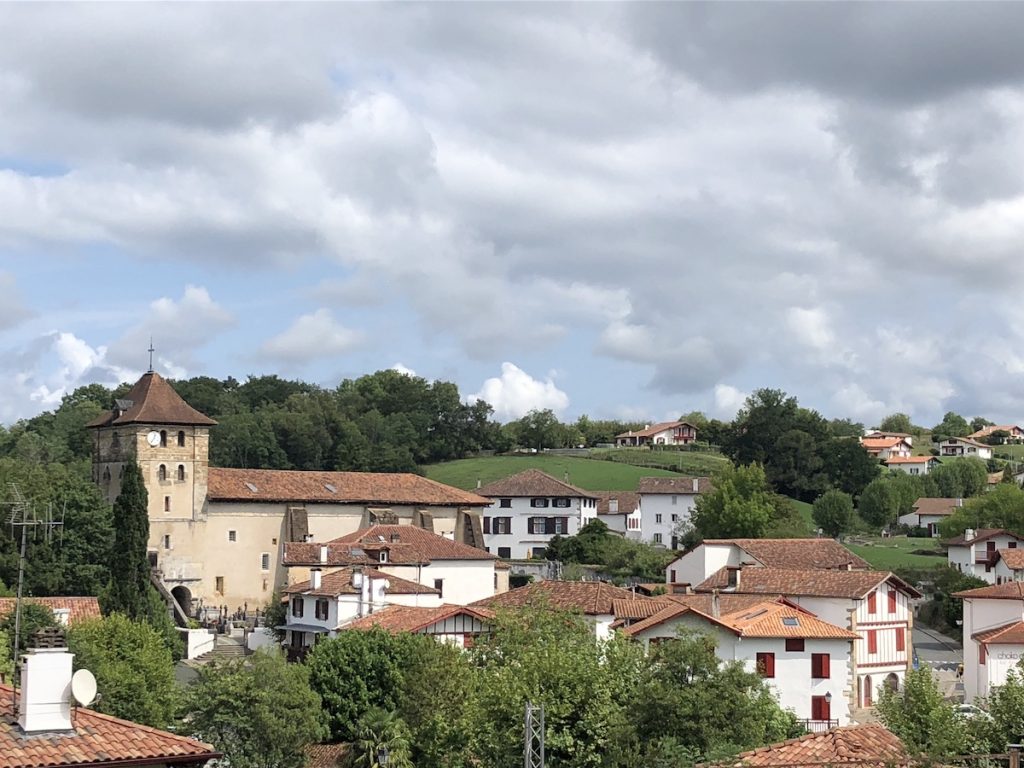
Two sun soaked days of freedom on the Côte d’Argent, and then we shifted our base to the riverside town of Bayonne for a taste of French Basque country.
It began with a drive through the foothills of the Pyrenees, where small villages locked architecture into a cultural time capsule and grew the staple foods of French Basque cuisine.

First up was Espelette, the village that gives its name to the ubiquitous pepper. Chili peppers made their way to France from South and Central America in the 16th century, at first medicinally and then as a condiment, and quickly became a cornerstone of Basque cuisine.
Their taste is somewhat fruity, with a mild heat that morphs into smoky sweetness similar to paprika when dried. It’s an essential ingredient in Piperade, the Basque equivalent of Provençal Ratatouille, and is delicious on scrambled eggs.
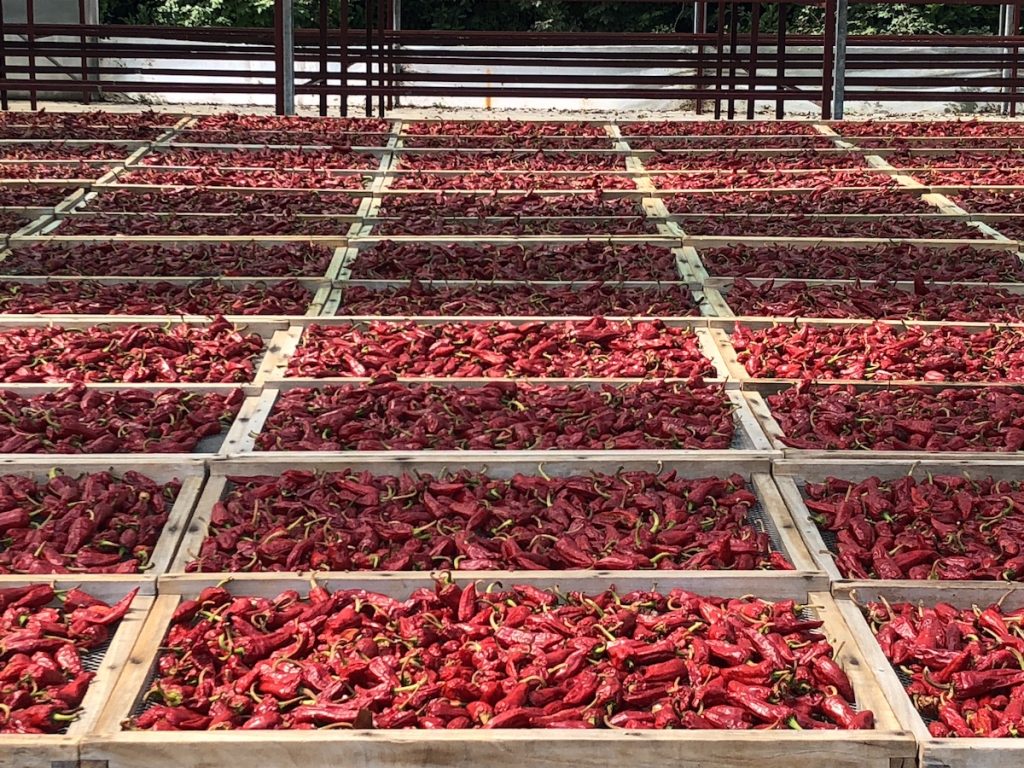
We were too early to see bundles of peppers drying on house walls and balconies, but I’m not sure if it would have altered the ambience that much. Even the houses were painted pepper-red.
We’d gotten an early start that morning, at least by my standards, and I was in need of coffee. A nearby bakery seemed like the best option. I chased it down with a single serving tart-sized version of Gâteau Basque.
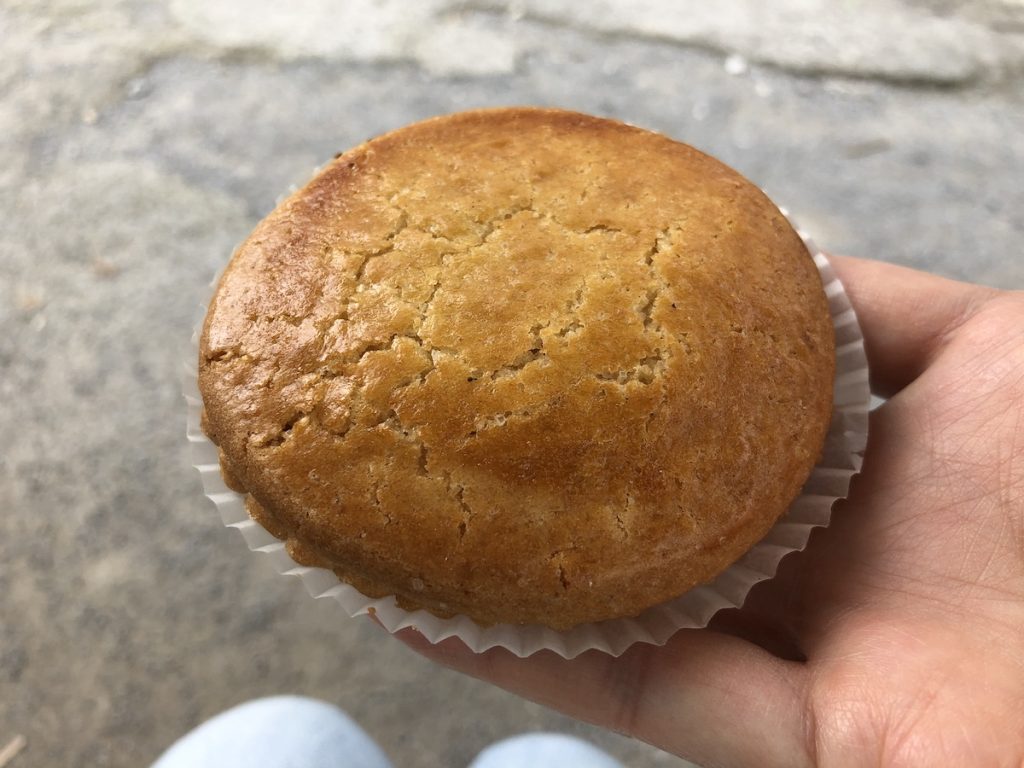
Made from layers of wheat flour dough and filled with either black cherry jam or pasty cream, it gave me the energy I needed to pilot our bossy German rental car up winding roads to the village of Ainhoa, right on the Spanish border.
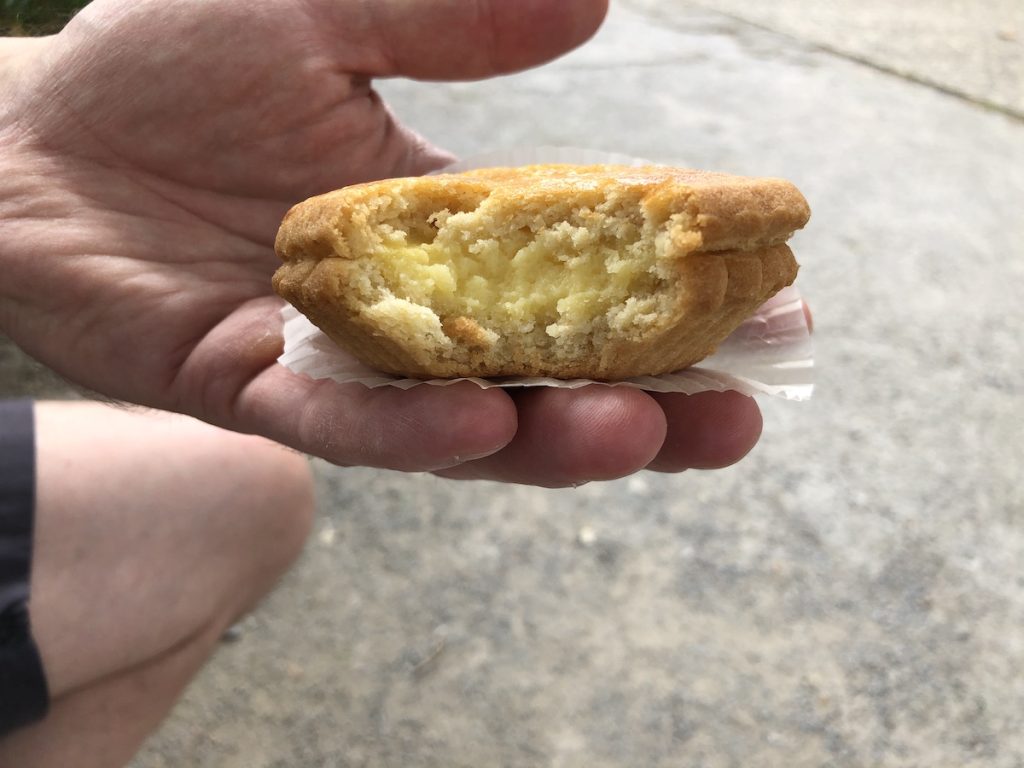
There isn’t much to see in these villages apart from houses and a church. We wandered into the latter and were greeted with a blast of recorded Basque music and an alter with a disco-lit Virgin Mary torn from a Medieval version of Stayin’ Alive. It was only later that I realized someone had stuck a euro coin in a slot to turn on the lights so they could photograph the timbre roof and the dark wooden balconies that hung from both walls.
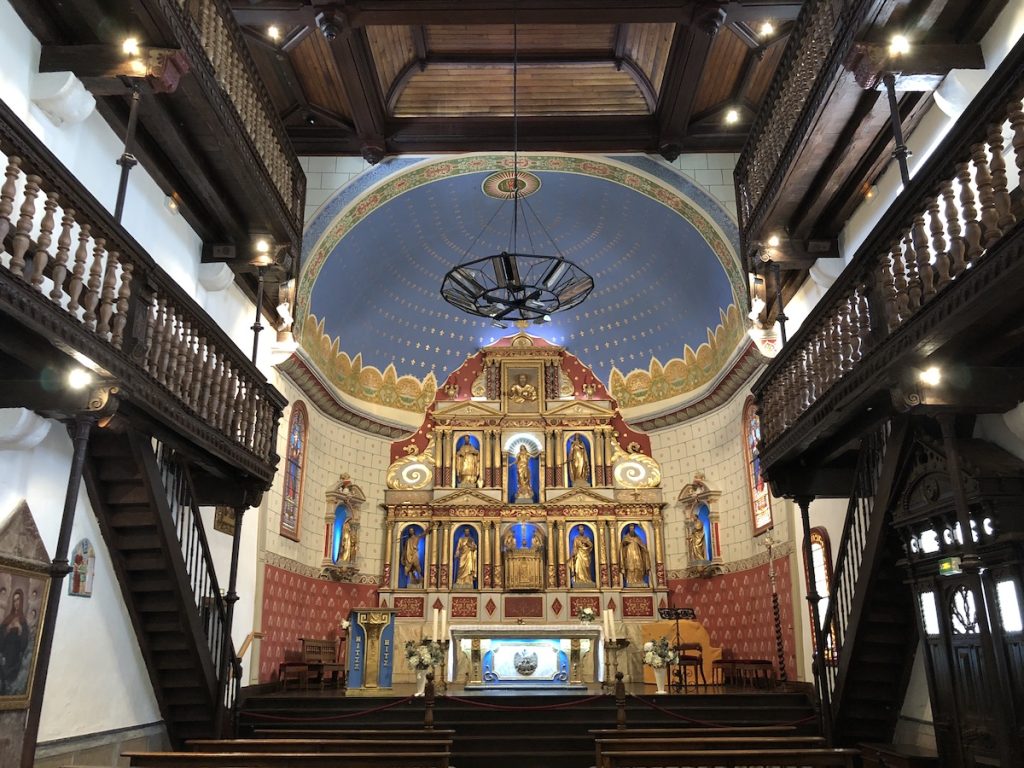
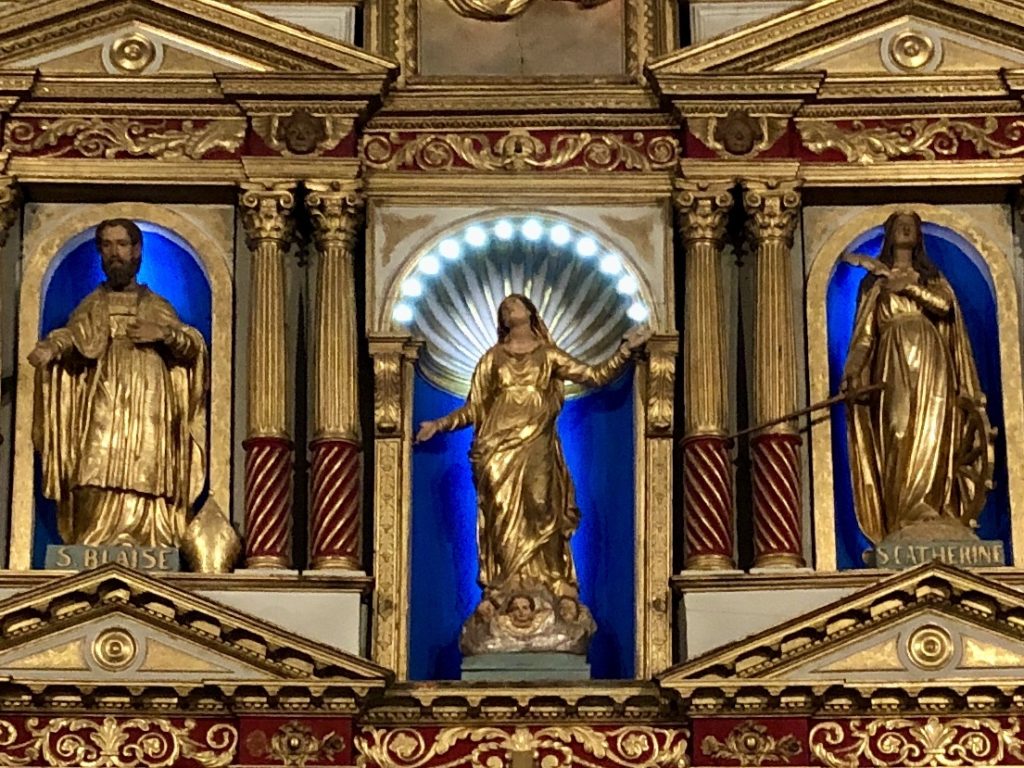
All that sacred disco sparked a hunger I didn’t realize I was feeling, not for salvation but for Bayonne ham and local cheese. We found a deli with vacant chairs on the opposite side of the village pelota court.
You won’t be surprised to learn the French side of Basque country produces its own unique variety of wine, just as the Spanish produce Txakoli. Irouléguy is the smallest AOC (appellation d’origine contrôlée) in France, grown on just 210 hectares across nine communes.
Most of these wines are reds, a blend of Cabernet Sauvignon, Cabernet Franc and Tannat, but it is also possible to find rosés and whites. The latter were the most difficult to track down, made with Petit manseng, Gros manseng and Courbu. I never succeeded in trying one.
The reds taste of exotic fruit, more acid than tannic, and with a rustic feel that makes up for a lack of sophistication by capturing the spirit of place, infusing the land into my blood by way of my liver. I would go on to sample more of these wines in Bayonne, but that would have to do for now because we had a long way to go.
Sare was the next village on our list. We took a glance inside the church and then stood on a dead end street to stare a properly craggy Pyrenees peak, which only left me longing for my hiking boots.
We weren’t very far from the coast, and so I suggested St-Jean-de-Luz, the pretty little fishing port where Delphine finally sees the green ray at the end of Éric Rohmer’s Le Rayon vert.
Its old town is the perfect place to catch a glimpse of a golden age that culminated in the 1660 marriage of Louis XIV and Maria Teresa. Before it was known as a seaside resort, St-Jean-de-Luz was the pirate scourge of English sailors, who called it the “Viper’s Nest” for its Basque corsairs.
Today it’s a popular swimming spot, thanks to strong sea walls that protect bathers from the crashing surf of the Bay of Biscay. The harbour on the other side of town is the only sheltered bay between Arcachon and the Spanish border.
I worked up a thirst inspecting the bikinis on the town’s long crescent beach, and we made our way back to the Pl. Louis XIV and found a seat at a busy cafe.
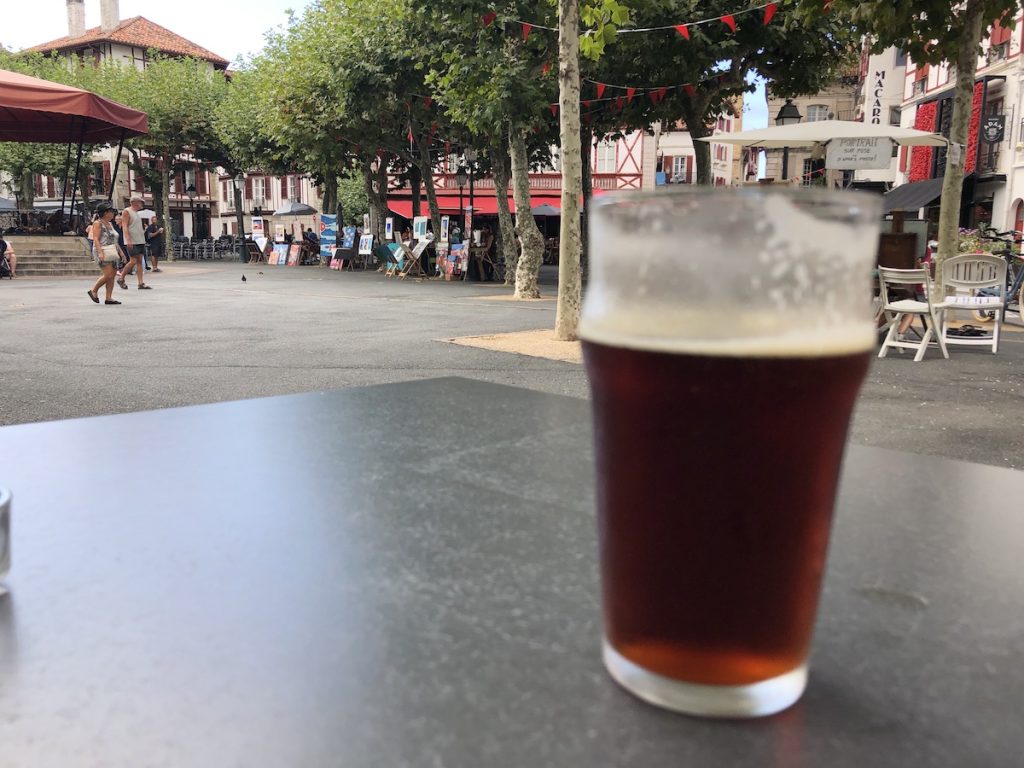
When traveling in France, I never miss an opportunity to slake late afternoon thirst with a Picon bière. I’d gotten a taste for this venerable drink in Paris, though I’ve read it’s more typical in Alsace, a region I’ve never visited.
The recipe is simple. A shot of Picon, a bitter gentian-flavoured apéritif, is added to a glass of beer, preferably pilsner, giving it a lovely tinge of red.
One glass is refreshing on a hot summer day, but going on a serious jag will cause you to run amok, as Jean-Paul Belmondo did in a memorable scene from Un Singe en Hiver. After overindulging in this concoction in a village bar filled with old men, he relives his memories of the Spanish Civil War, leaping onto a table, dancing flamenco and smashing glasses on the floor.
You can watch the clip on this page. Consider it a cautionary tale.
When he’s finally ejected from the premises, he makes it half a block before collapsing in the street. The proprietor turns to the other old men and says, “Le Picon-bière, ça pardonne pas. C’est de ça que mon pauvre papa est mort. Il n’y a rien de plus traître!”
“The Picon-bière, it does not forgive. That’s what my poor daddy died of. There is nothing more treacherous!”
Don’t say I didn’t warn you.
